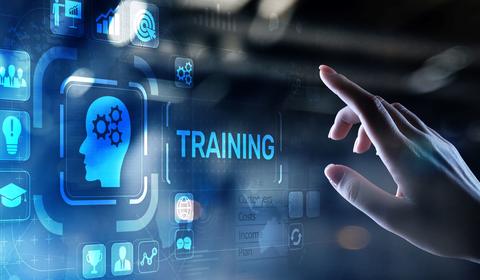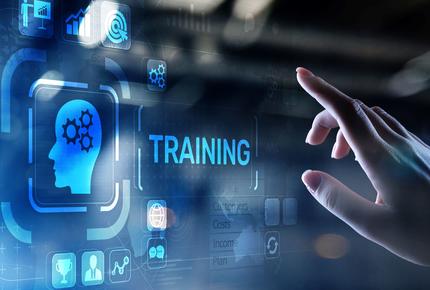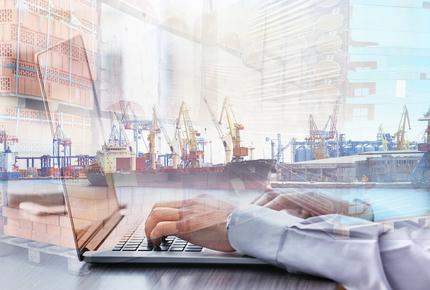
Why a well-trained crew is a safer crew
Shipping has always involved hands-on and intrinsically risky work, requiring experienced crews. Now, this complex field is evolving again as the maritime industry pursues increased digitalization and environmental efficiency. And this added complexity means that rigorous training procedures are more important than ever to keep assets and crews safe at sea.
Crew training is non-negotiable
As anyone in the maritime industry will tell you, onboard safety is an absolute on any vessel. No stranger to well-publicized mishaps, the maritime industry has built a now almost intrinsic sensitivity to issues of safety.
This is vital and positive: the shipping industry is global, and it is changing – both factors that are now enhancing existing risks and creating new ones. New fuels will mean new engine and storage technologies and bunkering techniques. Connected systems entail a greater potential area of attack for hackers and data breaches. Globalization means supply chain changes and a need to adapt to different port connections, different regulations and different risk mitigation measures.
In either case, the best way to mitigate risk is with knowledge and understanding – gained through maritime training courses. A crew that is well-trained and prepared for both its routine work and one-off challenges will be able to navigate them more safely and smoothly.*
Understanding what’s at stake
When it comes to guarding against accidents, crews are in the frontline. Their educational background and hands-on experience will help them recognize issues and find solutions, but training will aid in reaction time, prevention and problem solving.
Regular cybersecurity training, for example, is a reminder that simple actions reinforcing best practices are the frontline of defense against cybersecurity risks. By keeping crews up to date on how they should act in computer-based environments, owners can help ensure the protection of their assets.
What are the requirements for crew training?
The International Maritime Organization (IMO) established basic crew training requirements in the 1970s. Its International Convention on Standards of Training, Certification and Watchkeeping for Seafarers (STCW) has since undergone two major revisions. It is an effort to unify and standardize training practices across different countries – vital in a global industry.
The IMO STCW includes chapters on Masters and deck teams on-board, persons in charge of the engines, radio operators and safety and medical functions. It also proposes special requirements for personnel on specific ship types. It is amended to cover evolutions in the industry as they occur. For example, new requirements for training in operating LNG carriers and using modern onboard technology were added in 2010.
The International Organization for Standardization (ISO) has also introduced ISO training standards for the maritime industry, including the manner in which the training is delivered. ISO 5476:2023, for example, provides criteria for using virtual reality and simulators to train for the operation of lifesaving equipment required under SOLAS. The implementation of such a standard highlights a clear trend: the digital revolution is having a great impact on crew training methods.
E-training: the maritime world’s silver bullet against risk
In this digital world, sharing information has never been easier. And that is good news for shipping companies and crews alike.
Diversity can be a challenge when it comes to organizing training. No two maritime careers fully resemble each other. The combination of the different nationalities, different working experience and careers creates the need for practical and pragmatic training to uphold technical specificities. In addition, the nature of their work of course means that crews spend a long time away from shore or the country where their employer is located, making it impossible to schedule in-person training.
Nevertheless, training is an absolute must to mitigate risks – so operators must find the means to ensure the best possible learning environment. Online training platforms are therefore an essential tool in any operator or individual crew member’s belt. E-learning offers flexibility to crews that may be operating at all hours around the world. It enables crews to learn on the go, at a pace they can set themselves. It also grants operators the ability to better assess the quality of the training available and make better informed decisions as to which offers will work for their crews.
Client feedback from our own e-learning and e-training programs show the extent to which well-crafted programs are appreciated by the industry.
Assurance Global Service Line Leader
BV Solutions M&O
BV Solutions M&O’s training modules are produced by people with direct at-sea experience of these topics. Whether their background is in naval architecture, marine engineering or a career as a master mariner, they are all speaking from their own experience, as well as industry best practice.
As a technical advisory consultancy, sharing our knowledge and knowhow with our clients is something we take pride in. Providing these training sessions is in many ways a natural extension of our mission and duty to the industry;
BV Solutions M&O: a partner in pedagogy
BV Solutions M&O’s eAcademy platform is a one-stop-shop for crew training needs. Devised by our experts, our catalogue of 30 courses covers a multitude of subjects from naval architecture, to transporting dangerous goods, to sea trials. The online courses allow participants to study at their own pace, and can be fit easily around shift work. This makes them perfect for working crews to keep up to date with the latest developments.
Over 95% of clients declared themselves satisfied or very satisfied with the technical content of our courses, demonstrating that we have accurately tailored our pedagogic approach to the maritime and offshore industry. This is thanks to our long experience of ongoing internal training needs, which has been applied to our external training proposal.


